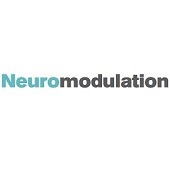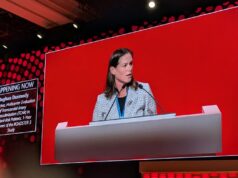 Data from a single centre using a single spinal cord stimulator manufacturer have shown that patients with neuropathic pain treated with spinal cord stimulation experience long-term reductions in pain intensity and increases in health utility and associated quality-adjusted life-years (QALY) gains.
Data from a single centre using a single spinal cord stimulator manufacturer have shown that patients with neuropathic pain treated with spinal cord stimulation experience long-term reductions in pain intensity and increases in health utility and associated quality-adjusted life-years (QALY) gains.
Further, according to authors, Simon Thomson (Basildon and Thurrock University Hospitals, Basildon, UK) et al, the findings from this study, published in Neuromodulation, associated with the increased longevity of rechargeable spinal cord stimulation (SCS) devices suggest that the cost-effectiveness of spinal cord stimulation may become increasingly favourable when compared with conventional medical management. The devices used in the study were either the Precision or Precision Spectra spinal cord stimulation systems from Boston Scientific.
This study presents demographic and long-term outcome data of patients that underwent an SCS trial between January 2008 and July 2015. From January 2008 until July 2011 data were collected retrospectively (retrospective cohort), and from then data were collected prospectively.
Three databases covered the periods from January 2008 to July 2011 (DB1), July 2011 to November 2014 (DB2), and November 2014 to July 2015 (DB3). Information on the outcome of the SCS device for DB1 was obtained through a retrospective case-notes review, whereas for DB2 and DB3 the data were collected prospectively.
While some of the patients in the study were given an on-table trial, the majority of patients were new to SCS and had a staged trial with the definitive percutaneous leads connected to tunnelled extension leads. If the trial outcome was successful as judged by the multidisciplinary team (led by a pain medicine consultant and including pain management trained clinical psychologists, physiotherapists and nurses), a full implant was completed. The minimum success requirement of the screening trial was if the patient reported ≥50% pain relief as judged by the percentage reduction in numerical rating scale of pain intensity (NRSPI) and satisfactory paraesthesia coverage (ie. 80%) of the pain area.
To collect the data, investigators issued a posted survey to all patients who had an existing full implant. The survey questions included a NRSPI during the preceding week at worst and at usual levels, the Brief Pain Inventory (BPI), and EuroQol five dimensions questionnaire (EQ5D). The EQ5D questionnaire was not completed by DB1 patients who had no baseline data.
From the databases, 321 patients who had an SCS trial were identified. Thomson et al report that 26 patients had leads removed, 22 were failed trials where the success criteria (50% pain reduction) was not achieved, and four were successful trials but developed an anchor site infection (1.5% of total extended trials) of which three were later implanted with on-table trial; the fourth had died due to unrelated causes. Therefore, 298 patients received an SCS system implant, giving a high trial-to-implant ratio.
In terms of explant, there were 20 of these—seven due to implant infection (2.3%), one due to an implantable pulse generator (IPG) malfunction, two were because the SCS was no longer required as the pain syndrome had resolved, four patients stated that the SCS had never helped them since implantation, two said that it was no longer effective, three due to disease progression, and one was removed at the patient’s request. Overall, the late failure rate resulting in explantation was 5.6%.
Further, there were 13 cases of lead revisions in 12 patients (4.4%) and six IPG pocket revisions (2%).
The postal survey was sent to 282 patients with an SCS in situ with 197 responding (70% response rate). One hundred and forty-five patients had prospective data and 52 had no baseline data. In terms of patient characteristics, 60% of responders to the survey were female, the mean age was 58 years and the mean follow-up was 2.7 years. The diagnosis was failed back surgery syndrome (FBSS) for 66% of the patients and chronic refractory pain syndrome (CRPS) for 12%.
“The majority of the patients that responded to the survey (94%) continue to use their SCS for pain relief, with 52.2% using it continuously day and night, 19.9% by day only and 21% only when required. Some to complete pain reduction with SCS was reported by 94.7% with 5.3% describing no pain relief when using the SCS device. Ninety-one per cent considered their pain to be better now than before SCS and 8.3% stated it was the same. Ninety-two per cent of the patients would have it all done again for the same result, 95.8% had all or some of their expectations met and 96.4% would possibly or definitely recommend to another patient. Importantly, 96.4% of patients would have wanted SCS earlier as a pain management option. The mean duration of refractory neuropathic pain by the time they received SCS was 77 months,” Thomson et al report.
Interestingly, as it relates to patient experience with paraesthesia, the survey responses showed that of the patients that underwent paraesthesia-led topographical pain coverage, 70% found the paraesthesia to be “neither pleasant nor unpleasant” to “very pleasant” and 4% were “not aware” of paraesthesia. However, 25% found the paraesthesia to be “mildly to moderately unpleasant” and 1% “severely unpleasant”.
The responses further showed that 81% of the patients thought the anchor site wound to be either “pain free” or “mildly uncomfortable”, 15.3% considered the wound to be “moderately uncomfortable” and the remaining 3.7% found it “severely uncomfortable”. Additionally, 75.4% of the respondents found the IPG site to be “pain-free” or “mildly uncomfortable”, 19.8% considered it “moderately uncomfortable”, and 4.8% “severely uncomfortable”.
Compared to a similar US-based study by Salim Hayek et al (Hayek SM, Veizi E, Hanes M. Treatment-limiting complications of percutaneous spinal cord stimulator implants: a review of eight years of experience from an academic center database. Neuromodulation 2015;18:603–608. Discussion 608–609), this UK-based study had lower infection rates and higher trial to implant rates: “SCS is delivered there as a separate trial and later a full implantation, rather than staged with temporary extensions. Many experts assume that the staged procedure is associated with a higher incidence of trial and implant infections. Hayek’s team reports a 4.3% implant infection rate. Trial to implant ratio, if high, may indicate comprehensive selection and patient expectation management providing that the explant rate is not too high. On the other hand it may be that some patients who may benefit from SCS may be excluded, as the selection criteria are too tight. At our centre, the current trial-to-implant rate is 91.6% with an explant rate of 6.7% (7.6% not including legacy patients). Hayek et al report a trial to implant rate of 67.8% with an explant rate of 23.9%.”
The authors conclude, “Spinal cord stimulation resulted in significant reductions in pain intensity and increases in health utility and consequent QALY gains for patients with neuropathic pain. These outcomes are further reinforced by high patient satisfaction levels and a willingness to have it all done again for same result if required. Low rates of implant infection, revision and device explantation were observed. These findings, associated with the increased longevity of rechargeable SCS devices suggest that the cost-effectiveness of SCS is becoming increasingly favourable when compared with conventional medical management.”
NeuroNews spoke to lead author Simon Thomson to get more insight into the findings of the study.

The data from your centre show a lower infection rate than that from other centres with a similar cohort. Can you explain the process you have implemented to reduce infection and state why this is so crucial?
We have published a successive cohort focussing mostly on infection complications. We have responded to these by introducing new standard operating procedures over that time period. Broadly speaking, we meet the recommendations of the recent NACC article on infection prevention—patient screening, disinfectant washing for three days prior, double gloving Chlorhexidine in alcohol skin preparation, iodine drape, wound washout, occlusive dressings, strict kg based antibiotic prophylaxis for open operation only.
How do you explain the high trial to implant rate and low explant rate observed at your centre compared to others?
We have a multidisciplinary team that not only helps select good candidates but also helps with pain management education and expectation management.
What does your study indicate about the cost-effectiveness of SCS compared to other therapies for pain?
This study can only guess as it was not a randomised study comparing with usual care but a single arm cohort. However, the figures compare favourably with similar RCT where SCS is added to usual care and compared with usual care alone. The 77-month period in refractory pain (defined as the time when pain could not be cured but only managed to the time of receiving the SCS) is far too long. A lot of unnecessary ineffective treatments could be saved.









